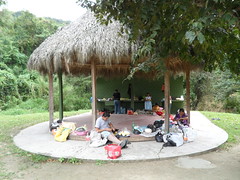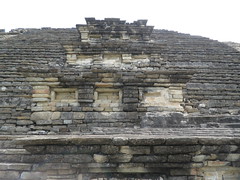Melissa's Dried Ancho Chiles, 3 Bags (3 oz) Best Price
Brand: Don Enrique List Price : low price to display |
Cheap Melissa's Dried Ancho Chiles, 3 Bags (3 oz) Information
- 3 x 3 ounce packages
- Ships Ground
- Available Year Round
- 100% Natural
Melissa's Dried Ancho Chiles, 3 Bags (3 oz) Review
The most commonly used dry chile in Mexico, Melissas Ancho Chiles pack a robust, earthy flavor with mild to moderate heat. The Ancho ranges from 3 - 5 on a heat scale of 1 to 10, and Scoville heat units are 1,000 to 3,000. Actually a dried poblano, Ancho Chile is the sweetest of the dried chiles, and becomes very fruity and aromatic when toasted. These chiles are a must for many classic Southwestern and Latin recipes, including moles, salsas, soups, and stews. Ancho Chiles from Melissas are hand selected for excellent quality, and will kick up your recipes with authentic, full-bodied flavor.
Melissa's Dried Ancho Chiles, 3 Bags (3 oz) Cheapest
|
|
|
| Brand: |
Don Enrique |
| Sale Price: |
Melissa's |
.0 |
$11.80 (New) |
Usually ships in 2-3 business days |
Melissa's Dried Ancho Chiles, 3 Bags (3 oz) Customer Rating
:There is nothing more delicious than a fresh, hot tamale. If you take your time and make these tamales with loving care, you will receive lots of compliments.

4 pounds boneless chuck roast
Melissa\'s Dried Ancho Chiles
4 cloves garlic
3 (8 oz.) pkgs. dried corn husks
4 dried ancho chiles
2 tablespoons vegetable oil
2 tablespoons all purpose flour
1 cup beef broth
1 teaspoon cumin seeds
1 teaspoon ground cumin
2 cloves garlic, minced
2 teaspoons fresh oregano, chopped
1 teaspoon red pepper flakes
1 teaspoon white vinegar
Salt to taste
1 tablespoon salt
9 cups masa harina
Directions
Place the beef and garlic in a large pot. Cover with cold water and bring to a boil over high heat. As soon as the water boils, reduce heat to a simmer and cover the pot. Let simmer for 3-1/2 hours, until the beef is tender and shreds easily with a fork.
After the beef is done, remove from pot, reserving 5 cups of cooking liquid. Discard the garlic. Allow meat to cool slilghtly. Shred into small pieces with 2 forks.
Meanwhile, place corn husks in a large container and cover with warm water. Allow husks to soak for 3 hours, until soft and pliable. You may need to weight them down with an inverted plate or heavy can.
Toast ancho chiles in a cast iron skillet, making sure not to burn them. Allow to cool and then remove the stems and seeds. Crumble and grind the chilies in a clean coffee grinder or with a mortar and pestle.
In a large skillet, heat up the oil. Mix in the flour and allow it to brown slightly. Pour in 1 cup beef broth and stir until smooth.
Mix in the ground chilies, cumin seeds, ground cumin, minced garlic, oregano, red pepper flakes, vinegar and salt. Stir in the shredded beef and cover. Let simmer for 45 minutes.
Place the lard and salt in a large mixing bowl. Whip with an electric mixer on high speed until fluffy. Add in the masa harina and beat at low speed until well mixed. Pour in the reserved cooking liquid, a little at a time, until the mixture is the consistency of soft cookie dough.
Drain the water from the corn husks.
Flatten out each corn husk, one at a time, with the narrow end facing you. Spread 2 tablespoons of the masa harina mixture onto the top 2/3 of the husk.
Spread 1 tablespoon of the meat mixture down the middle of the masa harina.
Roll up the corn husk, starting at one of the long sides. Fold the narrow end of the husk down onto the rolled tamale and tie with a piece of butchers' twine.
Place wrapped tamales into a steamer basket. Steam over boiling water for one hour, until the masa is firm and holds its shape. Make sure the steamer doesn't run out of water.
Serve immediately, allowing each person to unwrap their own tamales.
Keep leftovers inside their husks and store them uncovered in the refrigerator.
=> Authentic Mexican Tamales Recipes: Mexican Tamale Relish
Delicious over your hot tamales or other meats like beef, pork and chicken. Try adding plums for an additional flavor boost.
8 large medium ripe tomatoes, peeled and chopped into 3/4-inch chunks
2 cups firm apples, chopped
1-1/2 cups fresh peaches, chopped
1-1/2 cups fresh pears, peeled and chopped
1-1/2 cups onion, finely chopped
1 cup celery, finely chopped
3 tablespoons whole pickling spices
2-1/2 cups lightly packed brown sugar
2 teaspoons pickling salt
1-1/2 cups apple cider vinegar
Directions
Place the tomatoes, apples, peaches, pears, onion and celery into a heavy pot. Stir in the pickling spices, brown sugar, pickling salt and vinegar. Bring to a boil, while stirring constantly.
Reduce heat to medium and simmer until mixture is thick; stirring occasionally to prevent sticking. Cook about 45 minutes.
Pour the fruit relish into hot jars, leaving 1/-inch head space. Adjust caps. Process for 15 minutes in a boiling water bath. Cool jars. Store relish in a cool, dry place.
Authentic Mexican Tamales Recipes - Authentic Mexican Beef Tamales
Cha...cha...cha...it's chili time!
[http://www.best-chili-recipes.com]
Buy Other Cheap Melissa's Dried Ancho Chiles, 3 Bags (3 oz) Price Sale
If you looking for cheap "Melissa's Dried Ancho Chiles, 3 Bags (3 oz)" best prices. You can Buy Melissa's Dried Ancho Chiles, 3 Bags (3 oz) Now. Cheap Melissa's Dried Ancho Chiles, 3 Bags (3 oz) In Stock. :



